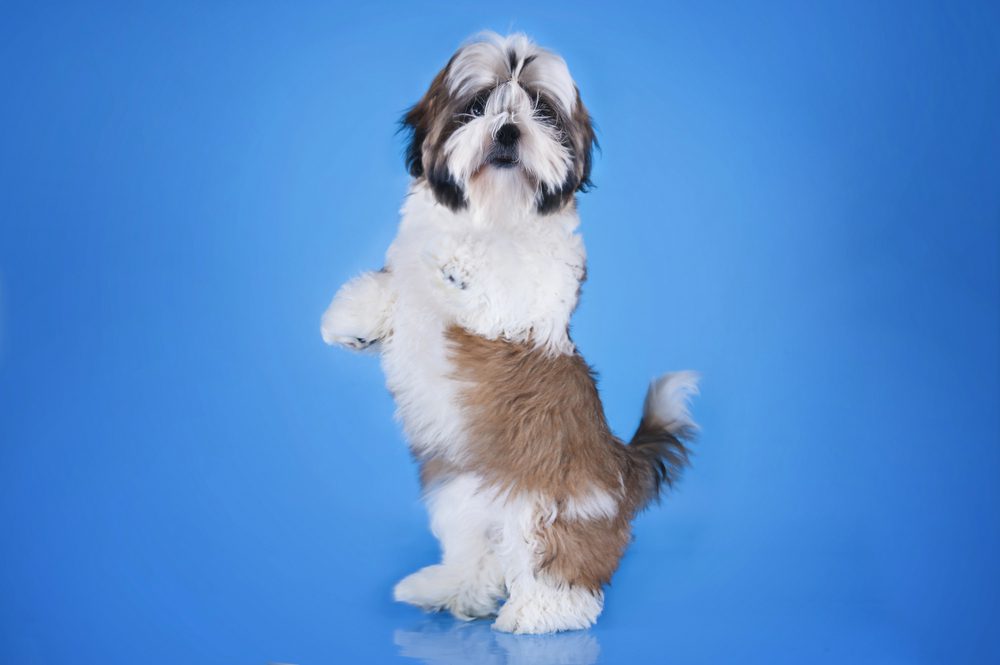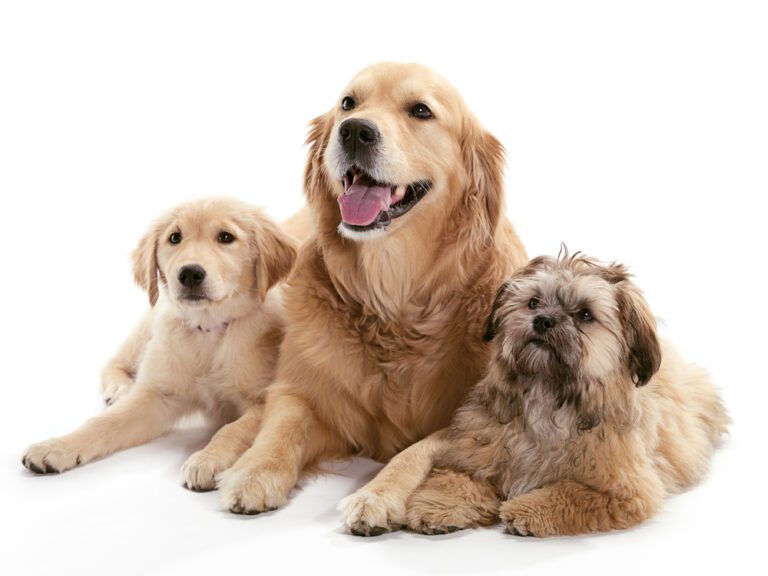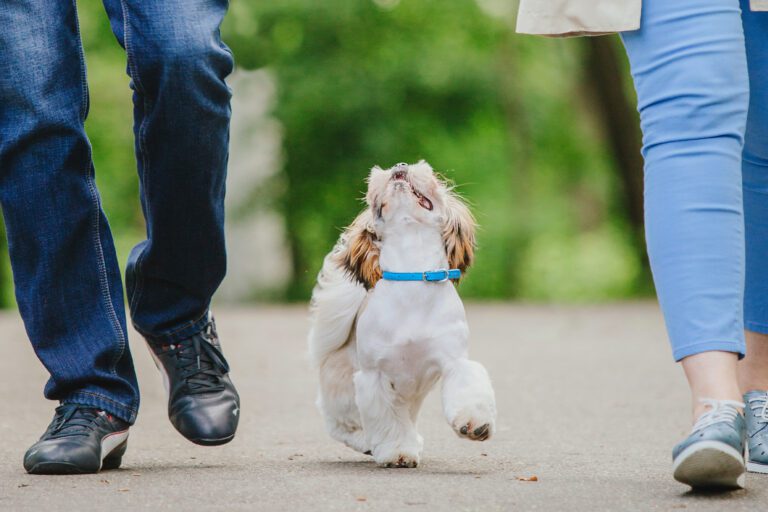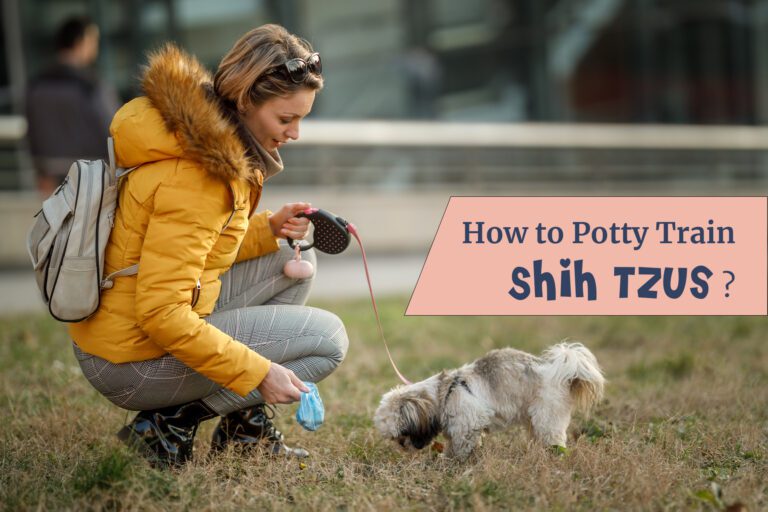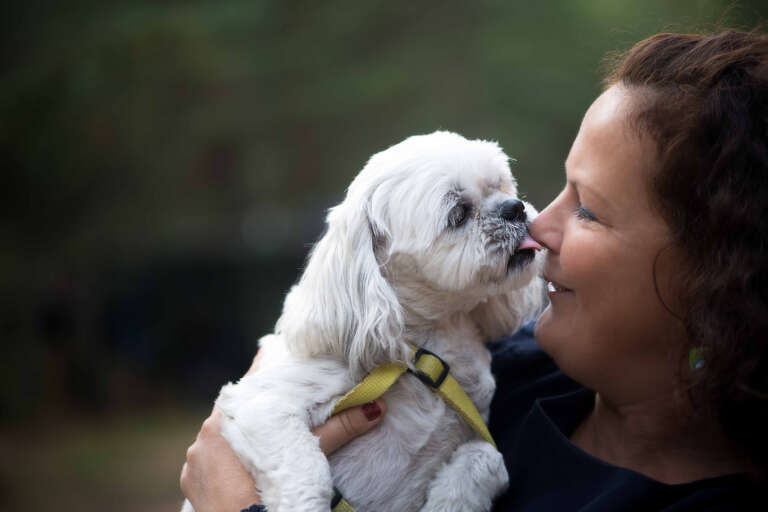Decoding the Language of Shih Tzus: A Comprehensive Guide
The Shih Tzu, with its charming demeanor and distinctive appearance, is a beloved companion. The language of Shih Tzus goes beyond mere barks and tail wags; it delves into a nuanced world of expressions and behaviors that form the basis of their communication.
In this comprehensive guide, we embark on a journey to decode the intricate language of Shih Tzus, exploring the various ways they express themselves and the vital cues that every owner should be attuned to. Whether you’re a seasoned Shih Tzu enthusiast or a new pet parent, this guide aims to unravel the mysteries behind these delightful canine companions’ adorable gestures and vocalizations.
Join us as we unravel the unique language of Shih Tzus, strengthening the bond between human and furry friend.

Recognizing non-verbal cues: What their body language tells you
In canine communication, much conversation occurs without a single bark or whimper. With their expressive faces and animated body language, Shih Tzus can convey many emotions without uttering a sound. Recognizing these non-verbal cues is essential for any Shih Tzu owner seeking to deepen their understanding of their furry companion.
Tail Wagging
A wagging tail is a classic sign of canine happiness, but the nuances lie in the details. A gentle, slow wag indicates contentment, while a rapid wag may signify excitement. Paying attention to the speed and height of the tail can provide valuable insights into your Shih Tzu’s mood.
Facial Expression
Shih Tzus are known for their expressive faces. A relaxed look with soft eyes and a slightly open mouth suggests comfort and ease. On the contrary, a furrowed brow or intense gaze may indicate curiosity or concern. Understanding the subtleties of their facial expressions is crucial in deciphering their emotional state.
Ear Position
The position of a Shih Tzu’s ears is a reliable indicator of their mood. Perked-up ears signal alertness and interest, while flattened ears against the head may suggest fear or submission. Observing the movement and position of their ears provides valuable context to their overall emotional state.
Posture and Body Movement
How a Shih Tzu carries itself speaks volumes. A confident, upright posture signifies assurance, while a lowered stance may indicate submission or discomfort. Pay attention to any limping or unusual movements that could mean physical discomfort or pain.
Shih Tzu owners can establish a deeper connection with their furry friends by honing in on these non-verbal cues. This understanding enhances the human-canine bond and allows for timely responses to their needs and emotions. In the subsequent sections, we’ll delve deeper into the intricacies of Shih Tzu communication, unraveling the layers of their unique language.

Barking, whining, and growling: Interpreting vocalizations
While Shih Tzus are often characterized by their friendly and gentle nature, they are not without a voice. Understanding the nuances of their vocalizations is crucial for deciphering their needs, desires, and responses to various situations. From joyful barks to subtle whines and protective growls, each sound carries a specific message in the intricate language of Shih Tzus.
Barking: Shih Tzus may bark for various reasons, and discerning the context is key. A series of short, sharp barks could indicate excitement or an attempt to get attention. Continuous barking may suggest anxiety, boredom, or a response to an external stimulus. Observing the accompanying body language and environment to grasp the purpose behind the barking.
Whining: Whining is a common vocalization in Shih Tzus and can convey various emotions. While it may express excitement or anticipation, persistent whining could indicate discomfort, fear, or a desire for attention. Paying attention to the situation and the dog’s overall demeanor helps decode the message behind the whines.
Growling: Growling is a natural form of communication for dogs and can serve various purposes. It may be a protective response to perceived threats, a sign of discomfort, or a playful expression. Understanding the context and combining it with other non-verbal cues provides insight into whether the growl is defensive, fearful, or simply a part of interactive play.
As a Shih Tzu owner, interpreting these vocalizations is integral to fostering effective communication. Establishing a connection between the sounds and their corresponding emotions enables you to address your furry companion’s needs appropriately. In the following sections, we will continue our exploration of the language of Shih Tzus, delving deeper into specific scenarios and behaviors that contribute to the rich tapestry of their communication.
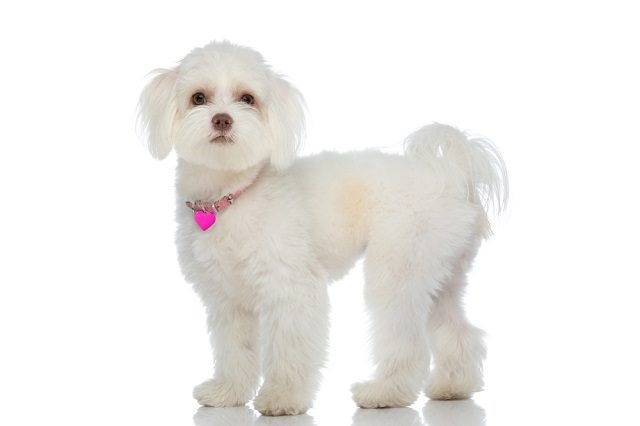
Tail wagging: The meaning behind the wag
The tail of a Shih Tzu is a dynamic instrument of communication, expressing a spectrum of emotions and sentiments. Understanding the nuances of tail wagging is akin to deciphering a canine Morse code – each movement conveying a specific message. As a Shih Tzu owner, interpreting the language of their tails adds a new dimension to your connection with these charming companions.
The Joyful Wag
A Shih Tzu’s tail wags enthusiastically when delighted. A broad, sweeping wag with a loose, relaxed body signifies happiness and contentment. A wagging body and a bright, attentive expression often accompany this joyous wag. It’s a visual proclamation of their positive emotions, a delightful dance that mirrors their inner joy.
The Tentative Wag
A Shih Tzu may sometimes offer a more subdued or tentative wag. This cautious movement may indicate uncertainty or a desire to appease. Paired with other body language cues, such as lowered ears or a slightly crouched stance, it can signify that your Shih Tzu is navigating a new or uncertain situation.
The Assertive Wag
Shih Tzus also uses their tails to assert dominance or control a situation. A high, stiff wag with the tail held erect signals confidence and a desire to take charge. It’s essential to recognize this wag in context, mainly if it occurs during interactions with other dogs or in unfamiliar environments.
The Nervous Wag
A Shih Tzu’s tail may exhibit a low, slow wag when faced with anxiety or nervousness. This cautious movement is often accompanied by other stress indicators, such as trembling or avoiding eye contact. Understanding the subtle cues of a nervous wag helps create a supportive environment for your Shih Tzu to feel at ease.
In essence, tail wagging is a language in itself for Shih Tzus. The key lies in observing the wag and considering the entire context – the environment, their body language, and the accompanying vocalizations. This section delves into the art of decoding the tales told by tails, enriching your comprehension of the nuanced communication that forms the foundation of your relationship with your Shih Tzu. As we continue our exploration, we will uncover more facets of Shih Tzu behavior, enhancing your ability to engage with and understand these lovable companions.
Eye contact and facial expressions: How they express emotions
In the intricate world of Shih Tzu communication, their eyes and facial expressions are powerful tools, revealing a spectrum of emotions and sentiments. Understanding the language encoded in their gaze and expressions provides a deeper connection between Shih Tzu owners and their delightful canine companions.
Soft, Relaxed Eyes
When a Shih Tzu is content and at ease, their eyes reflect a softness and relaxation. The gaze is gentle, and the eyes may appear slightly squinted, indicating a state of comfort and happiness. A calm demeanor often accompanies this expression and can be observed during moments of relaxation or affection.
Wide-eyed Alertness
Shih Tzus adopts a wide-eyed, alert expression in situations that pique their interest or warrant vigilance. Their eyes become more prominent, and they may raise their eyebrows. This heightened attentiveness suggests curiosity or a response to a change in their environment. Owners can often detect this expression during walks, playtime, or when introduced to new people or surroundings.
Avoidance or Squinting
Conversely, Shih Tzus may avert their gaze or squint their eyes when feeling uncomfortable, anxious, or submissive. Avoiding direct eye contact can signify respect or deference in the canine social hierarchy. Recognizing these cues is vital for creating a supportive environment and understanding when your Shih Tzu may need reassurance.
Intense Stare
An intense, unwavering stare may indicate focus or a desire for attention. A still body and a sense of anticipation often accompany this expression. Shih Tzus may use this gaze to communicate their needs, whether for play, food, or simply companionship. Responding appropriately to this focused stare strengthens the bond between owner and pet.
Observing eye contact and facial expressions is an art that enhances the depth of communication between Shih Tzu and the owner. The eyes are windows to their emotions, offering insights into their state of mind and well-being. This section explores the nuances of Shih Tzu facial expressions, inviting owners to engage in this silent conversation and further enrich the unique language that defines the human-canine connection. As we progress, we will uncover more layers of Shih Tzu behavior, deepening your appreciation for their expressive and captivating communication style.

Paws, tails, and ears: Decoding physical gestures
In the intricate dance of Shih Tzu communication, their physical gestures, conveyed through paws, tails, and ears, add layers to the silent conversation between these charming companions and their human counterparts. Understanding the nuanced meanings behind these subtle movements enhances the bond between Shih Tzu owners and their furry friends.
Pawing
Shih Tzus use their paws to communicate. Pawing at their owner can signify affection, seeking attention, or expressing a desire to play. However, persistent pawing may also signal discomfort or a need for reassurance. Interpreting the context, such as the accompanying body language and vocalizations, helps discern the specific message conveyed through this physical gesture.
Tail Positioning
The position of a Shih Tzu’s tail is a visual indicator of its emotional state. A high-held seat may signify confidence or excitement, while a tucked tail suggests fear or submission. Understanding the nuances of tail positioning, especially when combined with other cues, allows owners to gauge the overall emotional well-being of their furry companions.
Ear Expressions
Shih Tzus are endowed with expressive ears that convey various emotions. Perked-up ears indicate alertness and interest, while flattened ears against the head may signify fear or submission. Paying attention to the orientation and movement of their ears provides valuable insights into their immediate reactions and emotional responses.
Stretching and Rolling
Shih Tzus often stretches or roll motions for various purposes. Stretching may indicate a desire to relax, or an invitation to play while moving can be a playful expression or a way to mark their scent in a new environment. Recognizing these physical gestures contributes to a holistic understanding of a Shih Tzu’s behavior.
As Shih Tzu owners decode these physical gestures, they unveil the richness of the non-verbal language that underlines their relationship. This section explores the art of deciphering the messages conveyed through paws, tails, and ears, encouraging a more profound connection between owner and pet. As our exploration continues, we will delve into additional facets of Shih Tzu behavior, unraveling the layers of their unique communication style.
Putting it all together: Tips for effective communication with your Shih Tzu
Effective communication with your Shih Tzu goes beyond understanding individual gestures; it involves interpreting the holistic language they use to express themselves. You can build a deeper connection with your furry companion by combining insights from tail wagging, vocalizations, eye contact, and physical gestures. Here are some tips to enhance your communication with your Shih Tzu:
1. Observe Holistically
Pay attention to your Shih Tzu’s overall body language and expressions. Combining cues such as tail position, ear movement, and facial expressions provides a more comprehensive understanding of their emotions and needs.
2. Context Matters
Interpret their actions in the context of their environment. A wagging tail may indicate excitement during play but could signal anxiety in unfamiliar surroundings. Considering the setting enriches your understanding of their behavior.
3. Establish Routine
Shih Tzus thrives on routine, and consistency in your interactions helps them feel secure. Establish regular feeding times, play sessions, and walks. This routine fosters a sense of predictability and enhances communication as they become attuned to your schedule.
4. Positive Reinforcement
Reinforce positive behaviors with praise, treats, or affection. This encourages desirable actions and reinforces the communication loop between you and your Shih Tzu. Positive reinforcement is a potent tool for shaping their behavior.
5. Create a Safe Space
Ensure your Shih Tzu has a designated safe space to retreat if feeling overwhelmed or stressed. This could be a cozy corner and a comfortable bed. Respecting their need for personal space contributes to a trusting relationship.
6. Training and Socialization
Invest time training your Shih Tzu and exposing them to various social situations. This not only enhances their mental stimulation but also strengthens their communication. A well-trained dog responds more effectively to your cues.
7. Regular Health Checkups
Keep up with your Shih Tzu’s health needs. Regular veterinary checkups ensure that any discomfort or health issues are addressed promptly. A healthy dog is more likely to engage positively in communication.
8. Patience and Understanding
Building a strong connection takes time. Be patient and understanding, especially during moments of stress or behavioral challenges. Your consistent support and positive interactions contribute to a trusting and communicative relationship.
Incorporating these tips into your interactions lays the foundation for effective communication with your Shih Tzu. Their language is nuanced, and as you navigate this unique form of communication, you strengthen the bond with your delightful companion. In the final analysis, understanding and responding to your Shih Tzu’s cues is a rewarding journey that deepens the connection and enriches the shared experiences between you and your furry friend.
Conclusion: The Language of Shih Tzus
In the intricate dance of communication with your Shih Tzu, decoding their expressions, vocalizations, and gestures deepens your unique language. This understanding strengthens your bond and forms the basis of a fulfilling relationship.
As you interpret tail wags, vocal cues, eye contact, and physical gestures, you uncover the layers of this silent dialogue. Effective communication with your Shih Tzu is a mutual exchange, where you learn to convey your thoughts as they express their emotions.
The tips offer practical guidance, emphasizing observation, context, and positive reinforcement. Routines, a safe space, and training contribute to a holistic approach, enhancing your ability to connect with your Shih Tzu.
Your Shih Tzu’s language is a continuous, rewarding journey. Every wag, bark, and gaze contributes to the beautiful language defining your unique connection. Through patience, love, and attentive listening, the silent conversations with your Shih Tzu bring joy, understanding, and enduring companionship.

